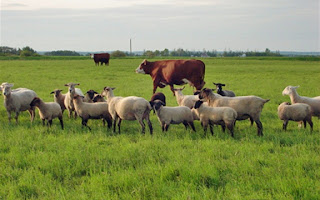 |
| Jack Savage. National Academy of Sciences. |
Jack graduated in 1903 and was offered a teaching position at Purdue University. More interested in field work, he joined the U. S. Reclamation Service, Idaho Division. In that capacity he worked on the Minidoka Dam project, beginning in 1904. He joined the project when “headquarters was a tent” on “the sagebrush plain.” The Minidoka power plant generated its first electricity five years later, when Jack had moved on to other jobs.
The first of those was with the Boise River irrigation system. Water users along that river had persuaded Congress to have the Reclamation Service take over, and expand, the New York Canal system [blog, June 20]. Over the next four years, Savage provided engineering input for diversion dams and canals in both the Boise and Payette river watersheds.
Jack’s work along the Snake River provided immense satisfaction for the young engineer. The Service’s projects brought water to the land. And with water, Jack said, “Farmers moved in to work the soil. Crops grew. Then came villages and towns. That's why I think this is the happiest, most thrilling work in the world.”
Impressed with prospects in Idaho, he left the Reclamation Service in 1908 and went into consulting work in Boise. While there he participated in projects all over the southern half of the state: Salmon River Dam, canals near Twin Falls, Swan Falls power plant, American Falls, and the Arrowrock Dam on the Boise River. He also found time to develop a farm and ranch near Nampa.
While the consulting was lucrative, by 1917 Jack had apparently decided he wanted to work on more challenging projects. He therefore accepted a position as Design Engineer back in the Reclamation Service (the U. S. Bureau of Reclamation after 1923). About that time, Jack moved to Denver, Colorado, although he retained real estate interests in Boise. However, after he married a Boise girl in 1918, he apparently sold off his Idaho holdings.
In 1924, he became Chief Design Engineer, with responsibility for all civil, electrical, and mechanical engineering designs.
 |
| Hoover Dam, 1942. Ansel Adams photo, National Archives. |
For over twenty years, Savage contributed to most of the famous western water projects of the era: Hoover Dam, Parker Dam on the Arizona-California border, Shasta Dam, the All-American Canal that irrigates California’s Imperial Valley, and Grand Coulee Dam. He was also involved with many other lesser-known projects
Experienced co-workers admired his remarkable design skills and engineering insights. Yet Jack always deflected that kind of attention and insisted that “important developments are accomplished by the joint efforts of a large number of engineers and not alone by any individual.”
Such was his reputation that other governments asked him to consult. He helped with actual or proposed projects in Mexico, Australia, Israel, Afghanistan, India, China, and at least a dozen other countries. These tasks continued after his retirement from the Bureau in 1945. Although he never sought personal recognition, he won it anyway: several Gold Medal engineering awards, elected into at least two different Halls of Fame, numerous Honorary memberships, three Honorary Doctorates, and more.
Savage passed away in Englewood, Colorado, in December 1967.
| References: [French] |
| Abel Wolman, W. H. Lyles, John Lucian Savage: 1879 - 1967, National Academy of Sciences, Washington, D. C. (1978). |






























